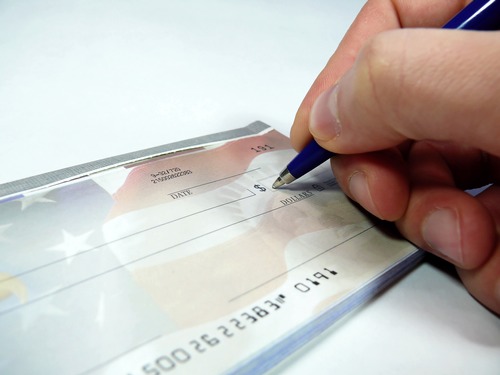
Author Archives: admin
The 29 Saddest Pictures in The World
Collected by itvnews
Humans are best creations; they are most intelligent in all existing species on the earth. With this intelligence they ruled the world and destroyed it too. Here are the 29 pictures which tell our sad past.
9/11 Attack:

In the morning September 11, 2001, two hijacked passenger jets crashed into the Twin Towers of the World Trade Center in New York City. This was no accident, but rather a series of attacks done by suicide bombers engaged with the Al-Qaeda terrorist group.
The attacks killed all the passengers on board the hijacked planes, and took away 2,974 innocent lives at the World Trade Center. More than 90 countries lost citizens in the attack, and the stock market was closed for a week.
Abu Ghraib:

Beginning in 2004, accounts of physical, psychological, and sexual abuse, including torture, rape, sodomy, and homicide of prisoners held in the Abu Ghraib prison in Iraq (also known as Baghdad Correctional Facility) came to public attention. These acts were committed by personnel of the 372nd Military Police Company of the United States Army together with additional US governmental agencies.
An Afghan Refugee Child Hides From a Dust Storm:
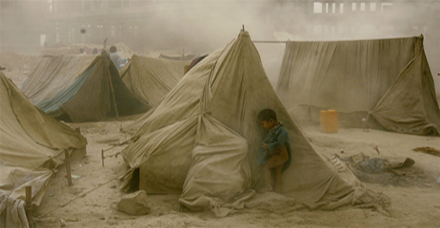
Bhopal India – Methyl Isocyanate Spill:

More than 40 tons of methyl isocyanate spilled from a Union Carbide-owned pesticide factory in Bhopal, India, in 1984, killing more than 20,000 people in the world’s worst chemical disaster.
After the spill, these skulls were researched, presumably for the specific effects the gas had on the brain, at the nearby Hamidia Hospital. The chemical injured not only the people who inhaled it, but also nearby animals (at least 2,000 of them) and trees, whose leaves went yellow and fell off within days.
Twenty-five years later, with people still claiming injury from the disaster yet little corrective action having been taken, the government of India has called for a study into the long-term effects of the spill.
Biafra:

When the Igbos of eastern Nigeria declared themselves independent in 1967, Nigeria blockaded their fledgling country-Biafra. In three years of war, more than one million people died, mainly of hunger. In famine, children who lack protein often get the disease kwashiorkor, which causes their muscles to waste away and their bellies to protrude.
Boston Fire:

On July 22, 1975, Stanley J. Forman was working in the newsroom of the Boston Herald American newspaper when a police scanner picked up an emergency: “Fire on Marlborough Street!” Forman rushed to the scene, where multiple fire crews were battling an intense blaze. There was a distress call for a ladder team to the rear of the building to help a stranded woman and child. Forman followed.
Buchenwald Camp:

In 1937, the Nazis constructed Buchenwald concentration camp, near Weimar, Germany. Placed over the camp’s main entrance gate, was the slogan Jedem das Seine (literally “to each his own”, but figuratively “everyone gets what he deserves”). The Nazis used Buchenwald until the camp’s liberation in 1945. From 1945 to 1950, the Soviet Union used the occupied camp as an NKVD special camp for Nazis and other Germans. On 6 January 1950, the Soviets handed over Buchenwald to the East German Ministry of Internal Affairs.
The SS left behind accounts of the number of prisoners and people coming to and leaving the camp, categorizing those leaving them by release, transfer, or death. These accounts are one of the sources of estimates for the number of deaths in Buchenwald. According to SS documents, 33,462 died in Buchenwald. These documents were not, however, necessarily accurate: Among those executed before 1944 many were listed as “transferred to the Gestapo”. Furthermore, from 1941 forward Soviet POWs were executed in mass killings. Arriving prisoners selected for execution were not entered into the camp register and therefore were not among the 33,462 dead listed in SS documents.
Burial Of an Unknown Child:

Burial of an unknown child. This picture shows the world’s worst industrial disaster, caused by the US multinational chemical company, Union Carbide.
Burning Monk:

As a protest to the This Monk slow and unreliable reforms in Vietnam, the Buddhist monks have resorted to immolation, such as this Mahayana Buddhist monk, He burned himself alive across the outskirts of Saigon, mainly because of the harshness done by the South Vietnam government to his fellow Buddhist monks.
He was re-cremated after he burned himself; his heart meanwhile remained in one piece, and because of this he was regarded as a Bodhisattva by the other Buddhist monks and followers. His act of self-immolation increased the pressure on the Di?m administration to implement their reform laws in South Vietnam.
Bushmeat:

Animals from primates to snakes are valuable commodities in the thriving, albeit illegal, worldwide trade of bushmeat, defined as wildlife killed either by commercial or subsistence hunters. With one million tons of bushmeat taken from African forests every year, the already endangered gorilla population-a primary victim of the trade-is in dire straits.
This photo shows a gorilla family in southeast Cameroon (minus the alpha male silverback, who managed to get away) that had been slaughtered in their nests by a bushmeat hunter early one morning.
Execution Of a Viet Cong Guerrilla:

This picture was shot by Eddie Adams who won the Pulitzer prize with it. The picture shows Nguyen Ngoc Loan, South Vietnam’s national police chief executing a prisoner who was said to be a Viet Cong captain. Once again the public opinion was turned against the war.
Hector Pieterson:

Hector Pieterson an icon of 1976 Soweto uprising in apartheid South Africa. Dying Hector being carried by a fellow student. He was killed at the age of 12 when the police opened fire on protesting students. For years, June 16 stood as a symbol of resistance to the brutality of the apartheid government. Today, it is known as National Youth Day – a day on which South Africans honour young people and bring attention to their needs.
Last Jew Of Vinnitsa:

Picture from an Einsatzgruppen soldier’s personal album, labelled on the back as “Last Jew of Vinnitsa, it shows a member of Einsatzgruppe D is just about to shoot a Jewish man kneeling before a filled mass grave in Vinnitsa, Ukraine, in 1941. All 28,000 Jews from Vinnitsa and its surrounding areas were massacred at the time.
Lynching Of Young Blacks:

This is a famous picture, taken in 1930, showing the young black men accused of raping a Caucasian woman and killing her boyfriend, hanged by a mob of 10,000 white men. The mob took them by force from the county jail house. Another black man was left behind and ended up being saved from lynching. Even if lynching photos were designed to boost white supremacy, the tortured bodies and grotesquely happy crowds ended up revolting many.
Nagasaki Hiroshima Masroon Clouds:

This is the picture of the “mushroom cloud” showing the enormous quantity of energy. The first atomic bomb was released on August 6 in Hiroshima (Japan) and killed about 80,000 people. On August 9 another bomb was released above Nagasaki. The effects of the second bomb were even more devastating – 150,000 people were killed or injured. But the powerful wind, the extremely high temperature and radiation caused enormous long term damage.
Napalm Girl:

The photo shows Phan Thi Kim Phúc (a Vietnamese-Canadian) at about age nine running naked on the street after being severely burned on her back by a South Vietnamese napalm attack.
Nile Perch in Lake:

One of the 100 most invasive species in the world the Nile perch was introduced to East Africa’s Lake Victoria in the 1950s, and has wreaked environmental havoc ever since. It’s illegal to possess or sell in some parts of the world, and is thought to have caused the extinction or endangering of hundreds of native species in Lake Victoria.
After the fish eliminated much of the algae-eating population, the lake became choked with algae. The perch has also increased local demand for firewood, because their higher fat content drives people to smoke them rather than dry them. Adult perch can grow to weigh more than 440 pounds, and are fierce predators that feed on insects, crustaceans, and other fish-even those of its own species.
Pictured here are dead Nile perch on a butcher table waiting for transport to local markets.
Nilgunyalcin Child Vulture:

Sudanese child being stalked by a vulture nearby. It is quite obvious that the child was starving to death, while the vulture was patiently waiting for the toddler to die so he can have a good meal.
Nobody knows what happened to the child, who crawled his way to a United Nations food camp. Photographer Kevin Carter won a Pulitzer Prize for this shocking picture, but he eventually committed suicide three months after he took the shot.
Palestine Father Saving Son:

Images from the video footage of 12-year-old Muhammad al-Durrah being shot dead in the Gaza Strip. The scene was filmed by a France 2 cameraman.
Palestinian Refugees:

World Press Photo of the Year: 1976 Françoise Demulder, France, Gamma. Beirut, Lebanon, January 1976. Palestinian refugees in the district La Quarantaine. About the image She was the first woman to win the World Press Photo, and did so on the 20th anniversary of the award. Demulder stated at the time that she hated war, but felt compelled to document how it’s always the innocent who suffer, while the powerful get richer and richer.
Palm Oil Deforestation:
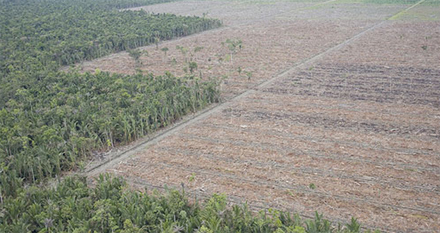
Indonesia is home to the world’s third largest tropical forest, but it’s disappearing quickly. Though often illegal, the forests are cut down both for a booming pulp and paper industry as well as to clear land for oil palm plantations, which supply diverse industries from biofuel to soap to cosmetics.
Because of deforestation, Indonesia is also the world’s third largest greenhouse gas contributor, behind only the U.S. and China; after the forest is cut down, the carbon normally sequestered in the peatland soil is no longer shielded from being released into the atmosphere.
Pollution and Power Lines:
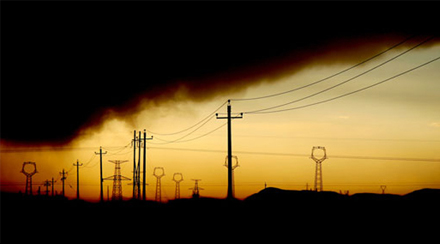
China’s economy has exploded in recent years; so has its pollution problem, leaving no aspect of the country’s environment unaffected. Solid waste often lacks proper disposal, waterways have been polluted, and the air quality has plummeted, largely due to the coal-fired power plants that serve as the country’s primary source of energy.
Environmental degradation has gotten so bad that the Chinese government, which doesn’t easily take-or allow-criticism, has admitted that birth defects in the country have increased as a direct result of it, particularly in coal-producing regions like the north, where this picture was taken.
Second Largest Oil Spill Ever:

The Ixtoc I exploratory well suffered a blowout on June 3, 1979, in Mexico’s Bay of Campeche, 600 miles south of Texas. The well was not brought under control until the next year, by which time 140 million gallons had spilled into the bay. The only larger spill occurred during the 1991 Gulf War, when Iraq dumped-deliberately-up to 462 million gallons of oil into the Persian Gulf.
Segregated water Fountains:
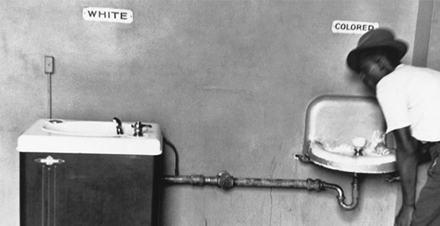
A segregated water fountain with a vastly larger and more desirable fountain for whites, and a small fountain for minorities.
Sludge Kingston Tennessee:
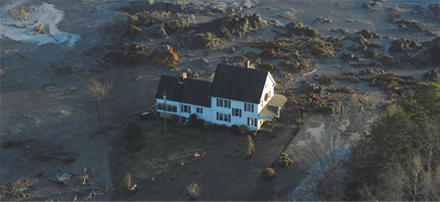
More than 1 billion gallons of toxic sludge were released into a Tennessee community when a dam collapsed last December, causing a massive coal-ash spill at the Kingston Fossil Plant, a coal-burning power plant owned by the Tennessee Valley Authority.
Coal ash is known to contain dangerous elements including arsenic, lead, and selenium, yet the TVA refused at first to issue any health warnings about contamination from the spill. The agency, which weeks later admitted prior leak problems at the plant, also refused initially to declare as uninhabitable the houses in the area, like the one pictured here, that were physically relocated by all the sludge.
Starving Boy:

World Press Photo of the Year: 1980 Mike Wells, United Kingdom. Karamoja district, Uganda, April 1980. Starving boy and a missionary. About the image Wells felt indignant that the same publication that sat on his picture for five months without publishing it, while people were dying, entered it into a competition. He was embarrassed to win as he never entered the competition himself, and was against winning prizes with pictures of people starving to death.
The American Bison:
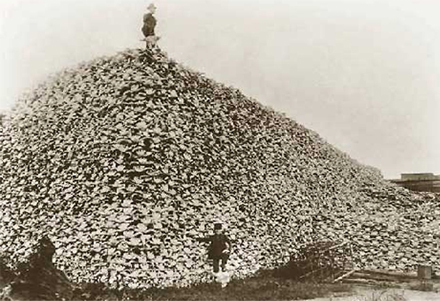
A product of U.S. Army-sanctioned mass slaughter of American bison in the 1800s, these bison skulls are waiting to be ground for fertilizer, most likely in the American midwest. The slaughter was so “effective” that the population of bison in the U.S. is estimated to have dropped from around 60 million in 1800 to as few as 750 in 1890.
Tsunami Dead Bodies:

The Boxing Day Tsunami that struck Thailand in 2004 caused approximately 350,000 deaths and many more injuries.
View of Floods:
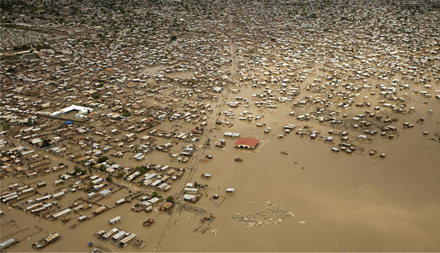
An aerial view of floods caused by Tropical Storm Hanna is seen in Gonaives, Haiti on September 3, 2008. Haiti’s civil protection office said 37 of the 90 Hanna-related deaths had occurred in the port city of Gonaives.
-Prashant Vikram Singh (Reasearch India Organization)
She told me we couldn’t afford beer anymore…
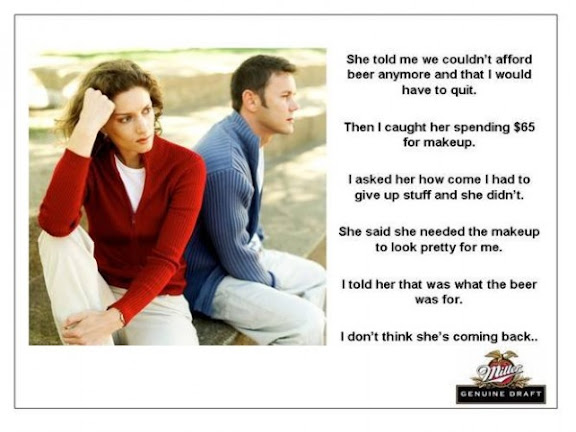
If a guy says GO MAKE ME A SANDWICH what’s a good comeback?

Identify yourself! Wait…you’re a cardboard cutout!

7 iPhone Apps That Can Save Lives
Written by Ben Parr
 What can’t iPhone applications do? There are apps for almost every interest and every need. But while apps for politics or saving money are great, you can live without them.
What can’t iPhone applications do? There are apps for almost every interest and every need. But while apps for politics or saving money are great, you can live without them.
However, the same cannot be said for the seven apps highlighted in this article. These apps do everything from check your vitals to getting you important first aid information during an emergency. Anything can happen, so it’s always best to be prepared. iPhones are particularly suited for this task, especially if you install some of these apps:
1. Airstrip OB

AirStrip OB is an iPhone app developed specifically for doctors in obstetrics, or doctors dealing with pregnancy and childbirth. It sends detailed information on a patient’s vitals so that they know the condition of their patient on the go. Push notifications means that doctors can get alerts if an event such as a cardiac arrest occurs.
2. CPR & Choking
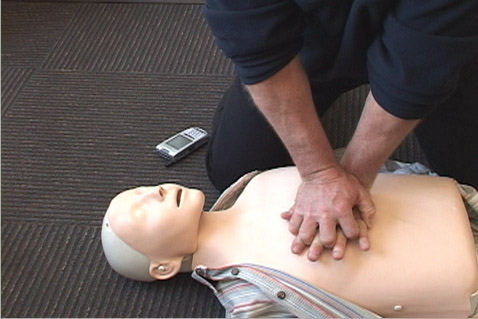
While Airstrip OB may only be useful for doctors, CPR & Choking is useful to everyone. This free app, built as a public service by the University of Washington and King County EMS, houses an array of video demonstrations that help you know what to do if someone you know is undergoing a medical emergency or cardiac episode.
CPR & Choking iTunes Store Link
3. Close Call

Very simple. Very effective. Close Call is a free app takes your iPhone wallpaper and layers it with emergency contact information in case the worst happens.
4. Pocket First Aid & CPR Guide
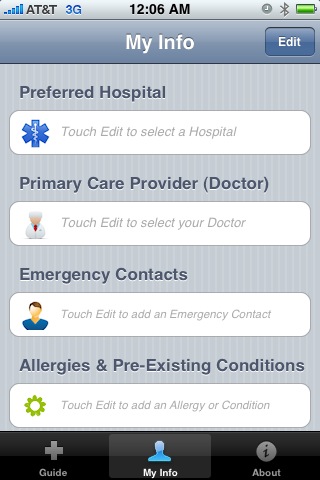
Similar to CPR & Choking, this app informs you of procedures for saving a person’s life, but this $3.99 application is definitely more extensive. It not only has videos to teach you how to provide first aid, but Pocket First Aid lets you create detailed medical profiles and contains up-to-date information from the American Heart Association.
Pocket First Aid & CPR Guide iTunes Store Link
5. iBP Blood Pressure
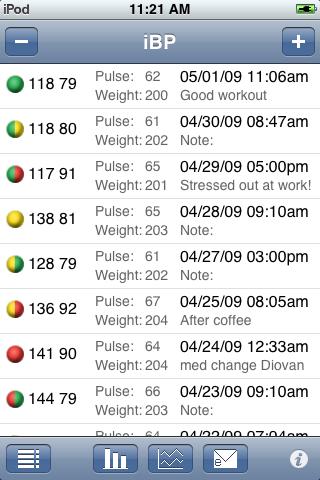
High blood pressure can kill you, plain and simple. Record a history of your blood pressure history with this $0.99 app. If you’re a diabetes sufferer, also check out Diabetes Log.
iBP Blood Pressure iTunes Store Link
6. Emergency Radio
An earthquake takes out the power. You get stuck in traffic afer hearing an explosion. Your building is evacuated and you don’t know why. We can think of a million reasons to have an emergency radio handy. For $0.99, you can have the emergency frequencies of almost all the major police and emergency departments in the U.S., as well as air traffic control.
Emergency Radio iTunes Store Link
7. Pet First Aid
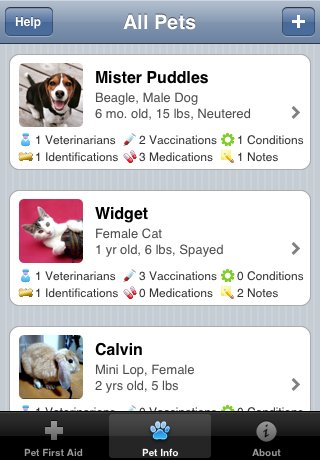
People aren’t the only lives that matter. This sister app to Pocket First Aid could save your best friend with its guides, first aid videos, and vaccine tracking.
I wish my mom was this cool

The Best Online Tools for Personal Finance
Written by SHELLY BANJO

Consumers are paying closer attention to what they buy, how much they save, and where they invest. These resources can be a huge help. Even better, most of them are free.
It’s tougher than ever to plan your finances. But it’s also easier than ever to find help on the cheap.
There are a host of Web sites that help you lay out a budget and track your spending and investments. Some let you set up a plan for a long-term goal, like college or retirement, and others offer advice about where to put your money. And many of these services are free of charge.
To help you wade through all the choices, we scoured the Web to find some of the best online tools and got recommendations from personal-finance pros. Here’s a look at some of the best sites we turned up, in a range of categories.
1. Budgeting Your Money
The first and perhaps most effective step to managing your money online is signing up for basic budgeting sites such as Mint.com, from Mint Software Inc. of Mountain View, Calif., Wesabe.com, from San Francisco-based Wesabe Inc., or Geezeo.com, from Geezeo of Hartford, Conn.
These free sites offer tools to help you keep track of what you’re spending, how much you’re saving and how your investments are performing. You create an account, and the sites automatically aggregate all of your online financial data, letting you keep track of credit cards, home loans and bank and brokerage accounts all in one place.
To help you avoid bank or credit-card fees, these sites can alert you via email or text message when a bank account is low or when a credit card is approaching its limit. And the sites can slice and dice the information to help you budget better. For instance, they will automatically show you how much you spend in any given category, such as restaurants or gas stations, and can compare your spending habits with those of other users, so you can identify areas where you might need to cut back.
Some sites, such as Geezeo and Wesabe, also offer a social-networking element that allows users to share tips and advice on a range of money-management issues.
One big caveat: Many of these sites need usernames and passwords for your various online financial accounts to get access to your data, says Jim Bruene, founder of online-banking research company Online Financial Innovations and Finovate, a conference series showcasing online financial tools and companies.
Some sites, like Wesabe, allow you to download statements from your bank or credit-card company and then upload them manually. This can be more time-consuming but a comfort to those who don’t want to give up their passwords, Mr. Bruene says.
There are other caveats to consider when using the sites. For instance, Mint.com showcases advertisements of financial-services companies and shows ads based on your activity on the site. (If you spend a lot on restaurants and gas, for instance, the site may suggest a reward card tied to those kinds of purchases.) Critics say this may create a conflict of interest, since the site is ostensibly trying to help you save money.
Mint.com notes that users must deliberately choose to click on the “Ways to Save Tab” displaying the offers. Donna Wells, the site’s chief marketing officer, says that when users decide to accept an offer, they “save real dollars, the financial institution gets a new customer at a low cost of acquisition, Mint.com sometimes, but not always, receives a small referral fee from the provider. That’s how we keep the Mint.com service free.”
2. Creating a Financial Plan
Moving beyond simple budgeting, a number of Web sites offer tools to help users keep track of and plan for their complete financial life. Experts say this can be a good starting place for jobs such as assessing your retirement goals, and figuring out how to structure your investments, spending and saving to achieve them.
But the pros caution investors to consider carefully before accepting product suggestions and investment advice. “There will always be a group of hard-core self-directed investors who will try to do it all themselves, but we see most people using these sites as a warm-up tool to financial planning. If they want to seek something more rigorous, they will go to a financial planner,” says David Schehr, a research director with Gartner Inc.’s Industry Advisory Services.
With that in mind, here are some popular sites.
SimpliFi.net, from SimpliFi LLC in Winston-Salem, N.C., uses a virtual financial adviser named Sophie to guide you through a planning process based on financial goals, such as saving for retirement or reducing debt. The site assesses how much you should spend and save to reach your particular goal and tells you how likely you are to achieve it with a “Goal Point Average” ranging from A+ to F. (You don’t give the site any of your financial-account information, but you do have to input approximate balances.)
The site can provide details on how much you need to save over a certain period to reach your goals and offer recommendations on types of investments to consider. The site is registered with the Securities and Exchange Commission, which offers investors a measure of protection: Among other things, the site must comply with SEC rules for registered investment advisers and is subject to examination by SEC staff.
Another site, Planwithvoyant.com, from Voyant Inc. of Austin, Texas, helps investors forecast the impact of unforeseen events. Step-by-step wizards guide you through the initial preparation of a financial plan, such as identifying your goals and entering income information and expenses. Then charts and graphs show your current financial condition and allow you to test the financial effect of what-if scenarios, such as an unexpected pregnancy or an early retirement. You can also run simulations on how to mitigate those risks, say, by adding insurance or altering your investment strategy.
For specific questions and advice, you can reach out to Voyant’s online community forum or check in with a financial professional in your area. If you choose this free option, you’re presented with a list of local advisers, where you can check out their credentials and choose to ask one of them for feedback. (The site says advisers in this service must be registered with the Financial Industry Regulatory Authority, or Finra. They pay for subscriptions to the service, and offer help, as a way to drive new business.)
Investors can also try ESPlannerBasic (Basic.esplanner.com), from Boston-based financial-software company Economic Security Planning Inc., which offers a free plan developed by Boston University economics professor Laurence Kotlikoff.
You enter your current and projected salary, retirement age and savings, among other things. The site calculates your sustainable living standard and allows you to tinker with how much a job change, housing move or retirement-account contribution can raise or lower your living standard.
Then the program recommends annual amounts of discretionary spending, savings and life-insurance holdings. The program incorporates a lot of the nitty-gritty details other programs tend to leave out, such as federal and state taxes and future Social Security benefits. But the process can be time-consuming—it takes up to 30 minutes to fill out all the necessary information. What’s more, the basic version stores your plan for only 24 hours, so every time you want to run the simulation, you must input the numbers.
“As you add complexity, it takes more time and effort to use these sites, and most people only want to bite off as much as they can chew,” says Mr. Schehr of Gartner.
3. Tracking Investments and Getting Advice
A growing number of investors are flocking to Web sites that allow them to track their portfolios and compare their choices with others in the community, including financial gurus like Warren Buffett and Jim Cramer.
People are looking for truly objective advice, not suggestions from advisers who are making commissions off trades, says Ron Shevlin, a senior analyst at Aite Group LLC, a Boston research-advisory firm that focuses on the financial-services industry.
He points to SocialPicks.com, from FinancialContent Services Inc., a financial-data and business-news company in Foster City, Calif., and New York-based Covestor Inc.’s Covestor.com. These sites allow you to keep track of your own investments and compare your portfolio’s performance to that of peers, professional analysts and financial bloggers.
For instance, SocialPicks.com’s Blogtracker feature automatically tracks performance of financial bloggers, various Wall Street legends and professional analysts based on blog posts and other online information.
San Francisco-based Cake Financial Corp.’s CakeFinancial.com also allows investors to track investment portfolios but in addition lets them aggregate all of their portfolios in one place, analyze past performance up to 10 years and compare portfolios with other users.
Cake’s comparison tools look at your current investments and find similar replacement funds with lower fees and expenses. In addition, the site lets you create a watch list, or list of positions that you’re interested in tracking, by performance and the number of Cake users who are buying or selling.
What other people do isn’t necessarily right, but at least it gives people context to make a more informed decision, Mr. Shevlin says.
For investors who want more advice, Mr. Shevlin suggests Portfoliomonkey.com. At the site, from San Francisco-based Portfolio Monkey Inc., you enter your portfolio’s ticker symbols and number of shares, and the site analyzes your current allocation’s expected return and losses, based on analytics evaluating historical volatility and performance.
The site can help you reallocate your portfolio, or offer recommendations for stocks that have a low correlation with your portfolio and high expected returns. You can go through those stocks and see how adding them would affect the portfolio.
Mr. Shevlin cautions, though, that the site is fairly new. “It’s promising to provide guidance. Whether or not they can actually deliver that is left to be seen,” he says.
Jay Liao, co-founder of Portfolio Monkey, says, “There is a line between recommendations and investment advice, and that’s a line we don’t want to cross at this point, but there are suggestions we can make for a user’s portfolio that can be informative and data-driven.”
Mr. Liao says Portfolio Monkey is bringing analytics and simulation tools to investors that previously were available only to financial professionals. “At the end of the day, the user gets a more diversified portfolio that produces more return at lower risks,” he says.
4. Checking for Fraud
For investors spooked by recent financial scams and scandals, the Financial Industry Regulatory Authority offers tools to monitor stockbrokers and identify and avoid fraud.
At Finra.org/BrokerCheck, you can check the professional background of current and former Finra-registered securities firms and brokers, as well as find any regulatory complaints or customer disputes.
You can also see a listing of the broker’s current registrations, licenses or exams passed. The Securities and Exchange Commission offers a similar check for information about investment-adviser firms at Adviserinfo.sec.gov.
Finra.org/Investors/ToolsCalculators offers Risk Meter and Scam Meter tools, which walk you through a series of questions aimed at identifying vulnerable individuals and investments. For instance, the Risk Meter asks you if you have checked with a securities regulator to see whether an investment professional is licensed. Based on the responses, the tool offers suggestions on how to combat fraud.
Likewise, the site’s Scam Meter allows you to check if an investment is too good to be true, asking questions such as: How did you learn about the investment opportunity, and what have you been told about it? From your answers, the site offers warnings and advice.
“It’s not the most gee-whiz slickest thing out there, but it’s helpful for investors who are afraid of getting into investing because of recent scandals and the economic meltdown,” Mr. Shevlin says.
5. Keeping Track of Credit
With credit scores determining everything from car-insurance rates to getting a mortgage, “understanding and managing your credit score is incredibly important to your entire financial life these days,” Mr. Shevlin says. He suggests CreditKarma.com, “which offers a truly free score and advice on how to improve it,” he says.
You don’t have to give the site your credit-card information, as you do with a traditional credit bureau. But CreditKarma, from San Francisco-based Credit Karma Inc., will ask you for your address, phone number and Social Security number. (The site says it doesn’t store the number.)
Once you submit that information, the site will give you your score—but not the entire credit report—and show you how you stack up against other users in various categories, such as overall users, or those in your state or age group.
Starting tomorrow, the site will help users identify major influences on their score, such as credit-card utilization and on-time payment history. The site uses scores generated by credit-reporting bureau TransUnion LLC.
Mr. Shevlin cautions users to be prepared to see credit-card and other product offers on the site. But he notes that users can rate the offers on whether or not they are helpful, and the site adjusts ad placement based on feedback.
6. Managing Loans
One site claims it can smooth out a potentially tricky financial arrangement: borrowing money from friends and family.
Virginmoneyus.com, operated by Virgin Money USA, in Waltham, Mass., a Virgin Group company, lets you use the site to create formalized personal loan documents that set interest rates and repayment plans. The site can also manage repayment using electronic funds transfer, email reminders and year-end reporting.
The cost: $99 to $199. The company also offers the service for business, real-estate and student loans, for various prices.
Virgin Money claims that formalizing loans increases the chance of repayment. Note, though, that it won’t lend money or match you up with a lender. The site only manages the loan between you and someone you have already identified, such as your grandmother or college buddy.
–Ms. Banjo is a staff reporter for Dow Jones Newswires in Jersey City, N.J. She can be reached at [email protected].
9 Must-Have Features We Want to See in a Google Chrome OS
Written by Kevin Purdy

What’s inside Google’s just-announced Chrome Operating System? How does it work, exactly? Nobody outside Google knows. We can, however, build a dream operating system from the ground up, and that’s what we’re doing with some help from the hive mind.
We asked on Twitter what features users wanted to see in Google’s Linux-based, web-focused operating system, due to be released in code later this year, then on sponsored netbooks in the second half of 2010. We’ve compiled nine must-have features that we’d like to see from Google’s upcoming operating system here.
Speed, Speed, Speed
“Well I’ll be more than happy with a 10 sec. boot time. Also, Google should drive software companies to consider Linux seriously.”
“if they want me to care, it has to make me go “holy crap, THIS IS FAST”; just like did when I started using chrome”
There are two schools of thought on the boot-up speed wars-one being that, if you’re going to work all day on a computer, a few more seconds at start-up don’t really matter. The other idea, though, is exactly what Google’s aiming at: the netbook as something you fire up, quickly jump on the net with, then suspend or shut down when you’re done or moving again. If Google can recreate the relative speed of Chrome as a browser to Chrome as an operating system, it’s definitely going to open more eyes.
Of course, it’s not just about boot-up speeds. Regardless of how quickly an operating system boots up, what matters the majority of the time is how fast it works when you’re actually using it. Google will probably be aiming for the sweet spot between kitchen sink functionality and fast, lightweight operation. We’d guess that the first few releases will be fairly barebones to keep things snappy.
Seamless Syncing of Your Browser and Desktop
Browser with syncable bookmarks. Thats A+ #1!!
It is odd, isn’t it? Despite the plethora of syncing services, there is still no viable bookmark synchronization service for any browser you want, whether on your phone or across desktops. Fixing this would go a long way toward demonstrating Google’s commitment to openness-even in an OS named after their own browser.
We’d go even further and suggest syncing all over the place. For example, I want instant, no-brain-needed synchronization of files and cloud data-whether through a “G Drive” or Dropbox or my own server space-between my laptop, my browser access, and my Android phone (or, in my Happy Land fantasy on Lollipop Lane, any phone out there).
Integrated Quicksilver/Quick Search Box
 Friend of Lifehacker and Quicksilver/QSB developer Nicholas Jitkoff is one of the folks at Google working on Chrome OS, and we’ve heard that he plans on integrating something Quicksilver-like into the OS, so that’s at least something that Quicksilver, Launchy, and Ubiquity geeks like us can get excited about.
Friend of Lifehacker and Quicksilver/QSB developer Nicholas Jitkoff is one of the folks at Google working on Chrome OS, and we’ve heard that he plans on integrating something Quicksilver-like into the OS, so that’s at least something that Quicksilver, Launchy, and Ubiquity geeks like us can get excited about.
Keyboard Shortcuts and Other Power-User Considerations
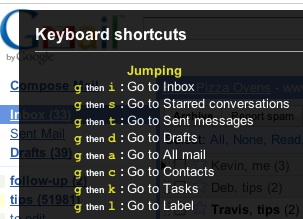 Apart from Quicksilver dreams, crazy keyboard shortcuts, along with all the small productivity pieces that power users love from their OS of choice, may not make all the difference to just anyone, but if you want to win over the Lifehacker crowd, your OS better be plentiful with shortcuts.
Apart from Quicksilver dreams, crazy keyboard shortcuts, along with all the small productivity pieces that power users love from their OS of choice, may not make all the difference to just anyone, but if you want to win over the Lifehacker crowd, your OS better be plentiful with shortcuts.
Support for All Kinds of Hardware
“I’d love to be able to load Chrome OS on my eight year old laptop and see it speed along. any chance of that?”
The Linux kernel that Chrome OS will run on is notably adaptive and swift on older processors with less memory. That said, compatibility with peripheral hardware like video cards, Bluetooth devices, and, especially, wireless networking gear, is the reason most clear-eyed Linux fans can’t quite say it’s ready for mass appeal, so it’ll be interesting to see how Google navigates this terrain. It’d be great if Google could churn out a lightweight OS that would work well with aging hardware as well as cutting-edge netbooks.
Further Blurs the Line Between Web and Desktop
“cloud storage (seamless) separately launchable webapps IE Fluid on OS X, fast standby/resume, ability to export settings to liveCD”
Wow, that’s a mouthful (tweetful?). Fluid/Prism-like apps seem like a given, based on what we’ve seen in Chrome’s built-in “application” powers, but it’d be nice to see web and desktop integration grow even stronger. Let me drag attachments into Gmail or access all of my apps whether I’m online or off. Last, we kind of think that live CD export is just a great idea.
An Eye for User Privacy
“must-have for chrome OS: no google snooping on me”
This will be the conversation that rises once the initial turbulence of “Google Trying to Kill Microsoft?” subsides. There will be license agreements and privacy disclosures, sure, but those concerned that Google’s holding too much of their personal data now have to contend with an operating system where “most of the user experience takes place on the web.” Let’s hope for controls, placed somewhere accessible, that let one control just how much data is saved, collected, and reported.
In a similar vein, total encryption of passwords and user data (in the case of loss or theft, a la BitLocker/FileVault) would be great. We’re particularly concerned about saved password encryption for web pages and (Wi-Fi) networks, and presumably so is Google.
Support for Current Linux Applications
As it’s built, Linux apps should work. Having wine in to allow windows apps would be nice. Running mac apps [would] be brilliant.
Linux apps can likely be made to work on Chrome OS, but many Linux apps work on just a choice distribution or two (these days, mostly Ubuntu and Fedora), then are painstakingly ported to meet other distributions’ library/system/kernel requirements. Google has experience tweaking WINE to the needs of their apps like Google Earth and Picasa, and could potentially make it more accessible for Windows porting. As for the last bit: Sure Mac compatibility would be “brilliant,” but also very unlikely.
Enterprise Friendly
“must have? for enterprise use, must run Salesforce.com, Oracle, SAP, etc in browser with no hitches. Oh, and Google Apps.”
A good question, and one we’d expect for any new platform. We’d assume that Google can’t, or won’t, rewrite their browser product to support proprietary protocols or handlers, but would hope that the increasing popularity of standards-compliant browsers will push enterprises down that road. It’s not that sexy for general consumers, but it could make a huge difference in widespread adoption, especially if Google wants their OS to compete with Microsoft.
Bonus:Google knows me so well

There’s still plenty of room for discussion on the must-have features of a modern OS, so tell us what you’d like to see included, or stripped out, in the comments.
14 Basic Skills All Men Should Possess
Written by Sean Percival
In today’s modern world there are many things we take for granted, many things our fathers would have known how to do, and some others that might baffle them. Additionally, on average, Americans and European men are starting to get married older, meaning that there is now a need to be self-sufficient in things long-considered to be within the realm of the woman. Whether you’re out camping, or at home or work, there are some basic skills a man must possess. The following are fourteen of examples of these skills – if you don’t know them, you should learn them, or you may be caught unaware sooner than you think. If you can think of others, please leave them in the comments below.
Drive a Stick-Shift
It’s a sad thought that more men, every day, are coming of age with absolutely no experience driving a stick-shift. To really add insult to injury, there are more men running around who don’t know how to drive a car period, but they’re beyond help if they’re that far gone. Driving stick is not a difficult thing to learn, and you don’t need to own a manual-transmission vehicle to acquire this skill. Have a friend teach you, hell, rent a car if you have to, it only takes a couple of hours to get the hang of it. At some point, just about everyone comes across a situation when they need to drive someone else’s car, and there’s a pretty decent chance that car will be stick. You’ll want at least a vague familiarity with it.
Hook up an Entertainment Center
There is absolutely NO excuse for this one. It’s now 2009, TV’s with wires coming out the back of them haven’t been new or fangled for 20 years. The wires are color-coded, and even labelled with handy names like “input” and “output.” Here’s a hint, if something outputs, there’s an input somewhere waiting for it. With HDTV’s on the rise now, it’s even easier with HDMI plugs, since there’s only one cable. Your grandfather may get away with having the Geek Squad come out to the house to install his new TV, but you need to man up and handle your own business.
Fix a Toilet
Everyone has a toilet, most houses even have more than one. They’re not new and they’re not that scary inside, either, yet somehow this all goes out the window the moment that flush handle stops making noises. Odds are, if you take the lid off the back of the toilet and peek in there, you’re going to immediately see what’s wrong. It’s not a complicated assembly, and if you really can’t figure out how the flapper works, the guy at Home Depot will be happy to take one and half minutes to explain it to you.
Navigate a Map and Use GPS
There should never be any instance when a man is handed a map and says “I don’t know what I’m looking at here.” It may sound silly to some, but it happens every day. The culprit is usually the same guy who can’t drive. Roadmaps aren’t exactly of the difficulty level the Goonies had to deal with; they have clearly marked labels and landmarks, just like the road you’re on. The same goes for ditching the map and using a GPS device, which are built to be easy enough to operate one-handed and without looking. That’s their purpose, so you shouldn’t have a problem learning how to use one.
Change the Oil
Granted, in a decade or so cars that even have oil to change will be much less common, but right now they’re the run of the mill and have been since your grandparents were toddlers. Every man should be able to, if needed, change the oil in his car, as well as swap the spark plugs and the air filter. These three things make up the bare minimum maintenance-skills trifecta for car-owners. The only exception to this rule would be if you grew up filthy rich, and only drove cars that required special garage tools and special knowledge and calibration. That’s probably not you.
Balance a Checkbook
A man needs to be able to manage his money. That’s just a simple fact of life, a part of growing up, and a major factor in whether or not he spends his life alone and miserable. Now, while it’s true that money isn’t everything, it definitely matters quite a bit. A woman isn’t necessarily shallow if she doesn’t want to spend her life with a guy who can’t keep his bank account from over-drafting, she’s just got good sense.
Cook the Perfect Steak
A timeless symbol of manhood, cooking the perfect steak is a long sought-after goal for any man who’s ever touched a grill. It’s just one of those things we all have to strive for in life. On top of that, it’s a great way to garner respect around the neighborhood, and it’s sure to get you a reputation as a good cook regardless of any actual cooking skills. The last thing you want is for your own wife or girlfriend to ask that you let your friend man the grill on the 4th of July. It should always be you.
Swim the Breaststroke

The need to be able to swim is one of basic survival. If you fall into a body of water, you need to be able to get back out, otherwise you’re a danger to yourself and others. You don’t need to be an Olympic-style swimmer, but you should at the very least be able to pull off a breaststroke if your life depended on it, and it might, you really never know. If the whole impending doom thing doesn’t sway you, then the fact that you look lame dog-paddling across the lake might.
Write Effectively
Unless you plan on spending your entire life working construction, and not as the foreman, you’re going to have to write more than one paragraph at some point. When that time comes, you need to be able to string something together that’s both coherent, and correct. That means spelling, grammar, and proper punctuation, all things taught throughout high school. If, like most young men, you weren’t paying any attention during high school and now can’t write a paper to save your life, there are plenty of resources available on the Internet; take some time and rectify your mistakes before it’s too late.
Dress for the Occasion
Jeans and a T-shirt are great, every guy needs to be comfortable, and nobody would fault a guy for wearing his favorite jeans to the store. That’s a far cry from going to a job interview, a wedding, or to a yacht party dressed like this. A man needs to have a presence and that means not looking like a drowned rat in unwashed clothes. You need to be able to dress yourself, and women will attest to this. It may be a little more expensive than the thrift store, but the payoff is ten-fold. If you lack fashion sense, and many men do, take a woman with you. There is no better shopping partner than a fashion-conscious woman.
Sew a Button
Yes, you can run around asking every woman in sight if she can help you fix your broken button, but you’re going to look like a jerk. It’s pretty easy to fix a rogue button if you can get ahold of a needle and thread. All you need to do is thread the needle, and then start looping it through the button holes and fabric. It doesn’t have to be pretty, it just has to keep the button on your clothes until you can replace them or find someone to do a professional job (like your mother). The last thing you want to do is to just walk around missing a button, that just looks ridiculous.
Do Laundry Properly
Many men get away without the most rudimentary of laundry skills, but they’re the guys who only own one pair of Levi’s and three black T-shirts. Socks and underwear are always optional to these gentlemen and they live the perennial single life. A man needs to be able to take care of his clothes, and that includes sorting them to allow for color-bleed as well as fabric types. The dryer can also be a deal breaker- even when washing correctly, and you don’t want to end up with a shirt that fits a 10 year old. Learning this skill is actually a pretty involved, drawn-out process, but with enough trips to the laundromat, and enough stupid questions annoying the women that happen to be there, you can learn how to handle your clothes like a fashion expert- and maybe even get a date while you’re at it.
Handle Roadside Emergencies
If you’re going to be out on the road, then you need to be able to handle a flat tire or jump a battery. Not knowing these two simple things can be just as bad as walking into the desert with no water. It’s also important that you be able to stop to help others who are stranded on the side of the road when they don’t know how to change their flat tire.
Build a Fire
Much like swimming, this is a basic survival skill that mankind developed long ago. There is always the off-chance that you may need to spontaneously build a fire, and you should have at least some inkling of how to go about doing it if the need ever arises. You don’t need to become an expert fire-starter, but you should at the very least be aware of the various methods that exist. There is no shame in taking the easy way out; always having a lighter, or a book or box of matches on hand. Weatherproof matches in your glovebox are always a good idea, and flint-strikers are cheap and non-combustible alternatives as well. Man discovered fire, don’t be the guy who never learned how to use it.










